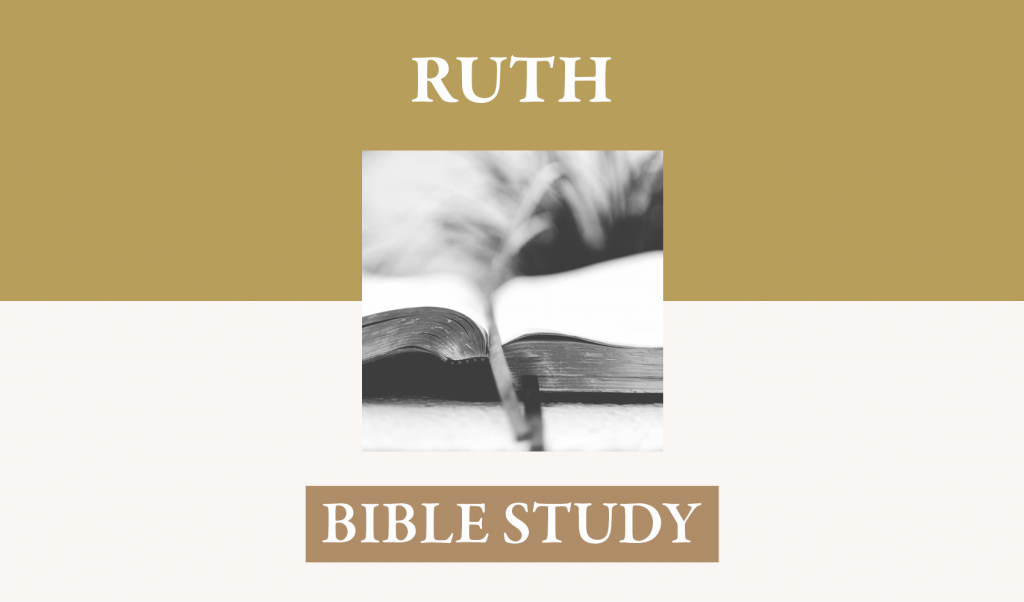I. The Purpose of the small book of Ruth
A. The introductory paragraph in the ESV translation says, “Ruth serves as a wonderful example of God’s providential care of his people, and of his willingness to accept Gentiles who seek him.”
B. Companion to the Bible, published by the Religious Tract Society in London in 1831 lists two designs of this small book. “1. To point out some particulars of a gentile extraction in the genealogy of the Messiah, in the line of Judah to David. 2. To show the watchful care of divine providence over those who truly fear the Lord, and put their trust in him.”
C. As an extension and supplement to those ideas, I would look at Ruth as a scriptural narrative, serving the overall Christological and covenantal perspective of the canon, specially designed to show how a multitude of particular events are integrated by God into the into the single event for which the world exists, the redemptive glory of the Son of God (1 Corinthians 15:25-28; 53-58; Ephesians 1:20-23; Philippians 2:8-11; Hebrews 12:2; Revelation 5:6, 7, 9, 13).
II. Universal themes manifest in the narrative of particular events.
A. The book, set in the time of the Judges, begins with a famine and ends with David, the king who typifies the Messiah through whom God supplies all of our needs (Philippians 4:18-20).
B. The book begins with the assault of death bringing misery to Naomi and ends with the joy of a new life (Ruth 4:16, 17).
C. The book begins with destitution and an insecure dependence and ends with security and the promise of plenty (4:11, 12).
D. It begins with a specific crisis in Israel and leads to an affirmation of the rejoining of all nations under the messianic rule of Christ (Revelation 5:9, 10).
- Look at the Genealogy as developed in Matthew 1:5,6 – “And Salmon the father of Boaz by Rahab, and Boaz the father of Obed by Ruth, and Obed the father of Jesse, and Jesse the father of David the king.”
- The genealogy lists only three women as mothers, Tamar (1:3), Rahab, and Ruth. This list shows that the book of Ruth deals with divine providence not only in the personal history of Ruth and Naomi but in some of the most unsavory events recorded in the Old Testament.
- Tamar was the daughter-in-law of Judah who fell to her seduction under the guise of a harlot and impregnated her (Genesis 38). Her son was Perez and was seen as a sign of abundance in Ruth 4:12.
- Rahab was the harlot of Jericho whose faith (Hebrews 11:31) made her a part of the true people of God. Boaz was her son and shows that even the people displaced by Israel and placed under an edict of destruction according to the command of God, nevertheless were left with a witness in Rahab and her family and a material part in the coming of a Jewish Messiah and universal Lord.
- Ruth was descended from Moab who was the firstborn son of Lot’s firstborn daughter. After escaping Sodom, she along with her sister, induced their father to impregnate them. They made him so drunk that he was not even aware that he had known her (Genesis 19:30-38). The Moabites as well as the Ammonites descended from these unions. Not only were the descendants of Abraham set apart for this mission, but the offspring of Lot, his nephew, were woven into the fabric from which arose the man Jesus who would save his people from their sins.
- The last verse of Ruth stands as a marvel of divine revelation to show us that the centuries between Ruth and the incarnation of the Son of God had taken no false turns in God’s purpose for “Salmon fathered Boaz, Boaz fathered Obed, Obed fathered Jesse, and Jesse fathered David (4:21), and “Jesus Christ our Lord was born of the seed of David according to the flesh” (Romans 1:3).
E. We are prepared to sense the absolute justice of God in his ways with and responses to Job. Job’s perplexity about the ways of God with him did not result in an explanation but in a rhetorical question that pointed out the absurdity of our arrogance in thinking that we have the capacity to trace the inner-connections of God’s wisdom and purpose in his pursuit of his glory: “Would you indeed annul my judgment? Would you condemn me that you may be justified?” (Job 40:8, 9). The book of Ruth re-enforces that reality that God’s ways indeed are wise, his providential decrees transcend any ability we have to follow all the connections, and that the connections we do see bring breathtaking wonder.
F. The narrative of the book of Esther proceeds on this same premise. The writer of that book purposefully avoided any reference to God. Instead, he sets forth the story in such an amazing web of apparent fortuities that we begin to look for the transcendent hand of power and wisdom that brought all these things to pass.
G. Peter proclaimed that the death of Christ, the greatest crime revealing the unfathomable depth of sinful rebellion that has gripped the human heart, took place according to the “determined purpose and foreknowledge of God” (Acts 2:22-24). Again, this event of all events demonstrated how God interpenetrates all of human history, every event of it, with a determining purpose that honors his wisdom without interrupting the reality of human moral responsibility. Ruth is a manifestation of that paradigm for the history of the entire created order both in its natural connections and in it moral connections.
III. The setting of this slice of life among the people of Israel:
A. It is during the times of the Judges. A prominent figure in it is Boaz, the son of Rahab. He has come to a condition of wealth, prominence socially, and personal maturity (3:10). So, one mature generation has passed since the initial settling of the country. There is a good possibility that Samuel wrote it since he would be deeply knowledgeable of many of the events during the time of the Judges and would also be intrigued by God’s setting apart David, the son of Jesse, as the second king of Israel (1 Samuel 16:11-13).
B. It hovers around Bethlehem as the specific place where the plot most clearly unfolds (1:1, 2, 19, 22; 4:11). This is a clear canonical connection to the eventual birth of Jesus in the “city of David” and of the “house and lineage of David” (Luke 2:4).
C. It is a narrative of hope, using famine, death, destitution, and forlornness, as a background for the rapid unfolding of hope, redemption, perpetuation of family, and joy in relationships. The first five verses cover the onset of the famine, the removal of the family to Moab, the death of the husband, Elimelech (which means “my God is king”), the marriage of the two sons, their death after ten years, leaving Naomi without husband or sons, but with two Moabite Daughters-in law.
IV. Unlike Esther, the narrative gives great prominence to the place of the God of Israel in all these events.
A. Naomi knows with certitude that the Lord oversees the events of human situations.
- She had heard that “the Lord has visited his people and given them food” (1:6). At this time she herself was laboring to support herself and the two women who had become her responsibility, for this news “she had heard in the fields of Moab” (1:6).
- When she advised her daughters-in-law to return, she invoked a blessing on them, “May the Lord deal kindly with each of you” (1:8).
- She had hope that the Lord would give them rest in homes with new husbands (1:9).
- She saw her personal destitution as the purpose of God in her life: “It is exceedingly bitter for me for your sake that the hand of the Lord has gone out against me.” (1:13) “The Almighty has dealt very bitterly with me. . . . the Lord has brought me back empty. . . . The Lord has testified against me and the Almighty has brought calamity upon me” (1:20, 21).
- When she asked Ruth to do as Orpah had done, she said that Orpah had returned “to her people and her gods.”
B. Ruth could not leave Naomi. She had seen the way of Naomi for ten years, and having absorbed her deep consciousness of the powerful presence of the Almighty God the Lord of Israel, could not leave her or escape the power of such a God-centered view of life..
- She professed that the God about whom Naomi had testified would be her God (1:16). She was willing to embrace everything that would come to Naomi through the wise disposal of the God she had come to know through Naomi.
- She recognized the right of God to judge her if she proved false to the convictions that she professed to have embraced (1:17).
C. The text points to hope as the proper response to a true knowledge of God. Our present condition of despair will, according to God’s purpose to magnify his grace, give way to a realization of the goodness and lovingkindness of God toward his people.
- Naomi looked upon her condition after a decade in Moab as virtually hopeless from an earthly standpoint.
- It resulted in hopelessness for the widows of her sons. The possibility of their having husbands from her was non-existent (1:11-13). If they stayed with her they could expect nothing but to share her poverty and destitute condition.
- Upon returning to her hometown of Bethlehem, she asked that they call her “Mara” (bitter) instead of “Naomi” (pleasant). The present did not appear very pleasant to Naomi.
- Ruth, even with the despairing description that Naomi gave of the future prospects with her, submitted to sharing all of that with her. “Where you go, I will go, and where you lodge, I will lodge. Your people shall be my people, and your God my God. Where you die, I will die, and there will I be buried.” One cannot construct a more thorough identification with another person than that. She had completely embraced Naomi’s God, she would be among that people, and should this commitment mean death, she would persevere in this identity until that time.
- Given the dismal prospects, Orpah, though sincere in her love for Naomi, did not identify with the austere providence that loomed before her and so went back to the Moabite people and their gods.
- The narrative of the story now has brought us to a point to see that gracious intervention of God for Naomi and Ruth, and bound up in that, for the happiness of Boaz and a sense in the entire town of how marvelous a providence all these events displayed.





















